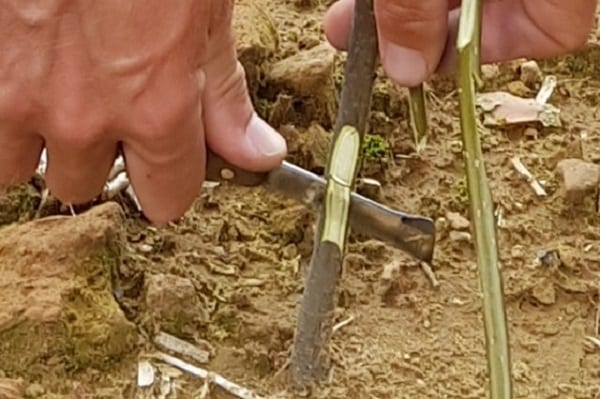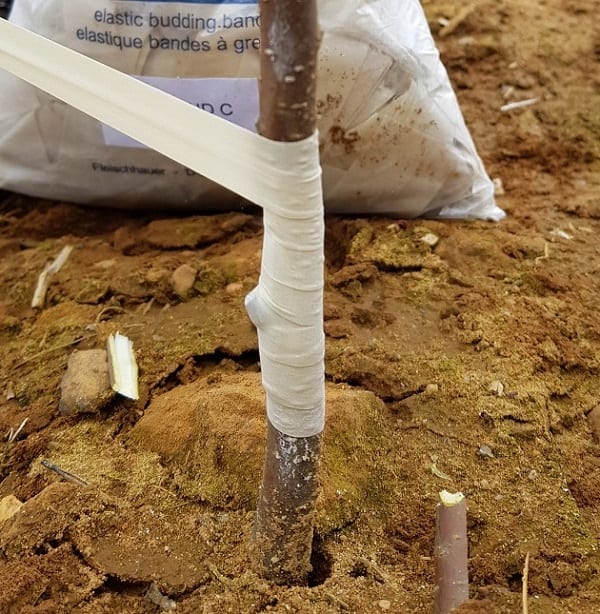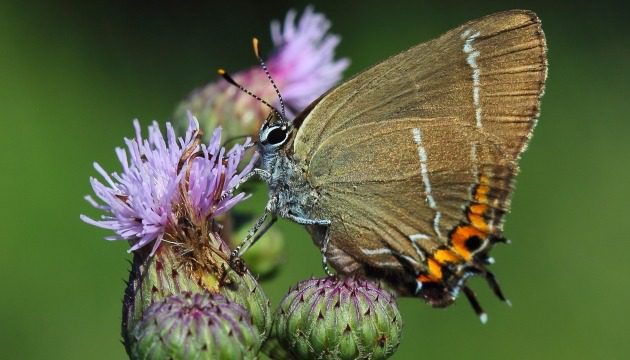As the summer nights slowly begin to draw in, in August the expert budding teams at Hillier Trees are out in the fields, busy propagating the next crop of Hillier British-grown trees. The techniques and skills of budding continue to be passed from generation to generation at Hillier, preserving this time-honoured craft.
Becoming a Budder
In 2018, Hillier trained five new people in the techniques needed to cut buds and graft them onto new tree stocks. Each year, these individuals will also receive refresher training along with further training on advanced budding techniques such as T / shield and Patch Budding.
It takes at least 3-4 growing seasons for Hillier to train a budder to an experienced level. By this time, the individual is likely to achieve a minimum of 600 trees budded a day and may bud up to 1,000.
Meet the Trainer
 Julian Tipper, expert budder and trainer at Hillier Trees
Julian Tipper, expert budder and trainer at Hillier Trees
Julian Tipper is the most experienced budder at Hillier Trees, with more than 34 years’ budding experience with the company.
Julian has trained many others at Hillier in this time-honoured craft, ensuring the skill and knowledge passes down the generations.
Over the years, Julian has developed and tested variations of some of the more advanced budding techniques, including the T and Shield techniques. These closely-guarded methods have proven to provide fantastic results, laying the foundation for the high quality of British-grown trees available from Hillier.
Step-By-Step Guide to Pocket Budding
Pocket budding is the first method learnt by a novice budder. These are the steps taught by Julian at Hillier Trees.
Step 1: Take a Bud from a Scion Plant
 Taking a bud from a scion plant
Taking a bud from a scion plant
First, a branch is taken from a tree that exhibits specific, desired features. This branch must have active buds on it. Desirable tree features to look for include upright growth, unique leaf colour etc. This is how cultivars of trees are produced.
Once the branch has been taken, the leaves are removed creating a budstick or scion, ready for the budder to use. The reason budding takes place during August is because the bud wood is ripe and the rootstock tree stems – in this case, grown on the Hillier field nurseries – are large enough to bud onto.
Step 2: Remove the Bud from the Scion
The budder will begin the process by making four cuts around the bud to carefully remove it from the scion.
Step 3: Create an Incision in the Rootstock Tree Stem
 Creating an incision into the rootstock
Creating an incision into the rootstock
Next, the budder creates a pocket wedge cut into the cambium layer of the field-grown rootstock tree. A Tina budding knife is used, which will be kept extremely sharp.
This pocket incision has to be made on a smooth part of the stem of the tree, down close to the ground. This is because the new bud being attached will become the resulting tree growing from the rootstock.
Step 4: Join the Bud to the Rootstock Tree

 Joining the bud to the rootstock
Joining the bud to the rootstock
The newly cut bud from the scion will now be lined up and placed carefully on to the freshly created pocket on the rootstock. The sides will be flush and join together.
Step 5: Bind the Bud

 Binding the bud
Binding the bud
Grafting tape is then wound around the bud to seal it, typically using rubber budding ties that will break down after 4-6 weeks. On specific trees where the tape is required for a full 6 weeks, polythene is used to bind and later removed by hand.
This is the first role taught to the apprentice budder, who follows the more experienced budder along the line of trees. He will tape and join each bud pocket the budder creates.
The buds are left for 3-4 weeks, during which time the bud and rootstock stem will join together. Once successfully joined, the energy in the rootstock will be transferred into the bud, creating its growth.
After this time, the top of the rootstock tree will be cut just above the newly joined bud. This forces all the energy from the roots into this one bud’s growth.
This brief description provides an insight into how Hillier grows many cultivar trees, such as the Tilia Streetwise. An average of 14,000 trees are budded and British grown on Hillier fields each year, going on to become part of our 750,000 overall tree production. Some of the trees being budded this year will be grown for many years, being transplanted into six different fields through the course of their maturity, reaching super semi-mature sizes of 80cm + girth. Some will be grown specifically for sale at heavy and heavy standard sizes.
For any assistance on British Grown trees which have a fully traceable history, contact the Hillier Trees team for assistance.



